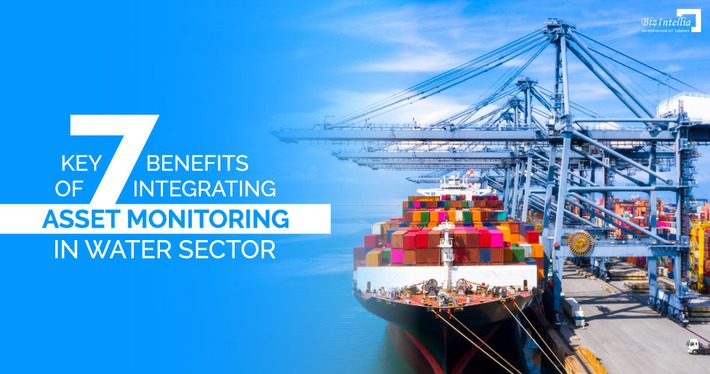
Water and wastewater utilities can employ the asset monitoring process to ensure planned maintenance and scheduled repairing of capital assets like pumps, valves, motors, pipes, etc. It is mainly practiced to achieve a sustainable infrastructure and minimize the total operating costs while delivering the services. Additionally, smart asset management consists of detailed asset inventories, operation and maintenance tasks, and long-term financial strategies. It thus provides a well-structured outline to improve the water management processes and help conserve natural resources at significant levels.
In the water sector, it is important to ensure a good working order of the assets regardless of their increasing age and fund availability. Using an IoT-powered asset monitoring system, you can identify the condition and performance of the assets, life-cycle costs, operability, and develop maintenance strategies. It helps mitigate the challenge of surplus costings of infrastructure maintenance by providing actionable insights, allowing the managers to supervise the details and take necessary actions within time.
Smart asset monitoring is a unique idea for better utility management, enabling advanced features to transform the traditional ways. There are immense benefits of including asset management with the water industry that includes prolonged asset life, fulfilling the demands of a rising population, budget-focused maintenance, instant emergency responses, reduced capital expenditures, etc. Also, you can hold on to these 7 key benefits of implementing a smart asset monitoring solution.
1. Compliance with Sanitary Regulations
The asset monitoring system can be customized according to the needs of the utility department, which mainly focuses on meeting the sanitary regulations to avoid the hassle of water mismanagement. The IoT-powered solution is equipped with the latest sensor devices to maintain the temperature conditions and pressure of the pipeline distribution system. It collects and records the data from the assets and generates informational reports that can be used to analyze the results and indulge in proactive asset management.
2. Aging Infrastructure
Aging infrastructure can be risky in changing weather conditions. Therefore, it is important to identify the risk and obtain actionable insights before it results in huge losses. The asset monitoring adds intelligence to the existing equipment by integrating different kinds of sensors and obtaining data. IoT technology is a data-driven concept that uses relevant information from the assets like temperature, pressure, and help the managers in analyzing their performance through the records. It helps them make improved decisions along with keeping a real-time check on the infrastructure.
3. System Reliability
Managers at water utilities are using the technology services to achieve a set range of goals and increase profitability. From analyzing water consumption patterns to managing the distribution, the authorities are now relying on the technological systems introduced by IoT. The advanced features and real-time monitoring provide various opportunities for customer satisfactory services. IoT-powered systems offer enhanced industrial functioning along with in-depth analysis and strategic decision-making. With the use of a cloud-based platform, the extracted data is kept secure, enabling greater efficiency of the assets.
4. Automation
The Internet of Things is leading its existence by transforming the water sector digitally. It uses high-end sensor devices and advanced gateways to extract information from the assets automatically. It helps optimize the overall functioning of the industry and focuses on providing simplified services to the users. Integrating IoT devices also increases the asset potential to a significant level, where you can obtain results automatically and increase industrial profitability.
5. Quality Services
IoT-powered monitoring provides tactical solutions in the water sector and allows the managers to generate asset-centric operations to better understand the performance of the asset. It offers real-time monitoring, generates accurate reports, and establishes a core asset management layer to increase plant effectiveness. Also, integrating IoT-powered solutions improves the future of the water industry by regularly monitoring the infrastructure and allowing the managers to make informed decisions.
6. Predictive Asset Management
Asset management using IoT technology is equipped with advanced analytics that predicts situational-based outcomes. It helps the authorities to stay prepared for the future and predict the asset’s health for timely monitoring schedules. Using advanced analytics and predictive maintenance it becomes easier for management to keep a regular check upon the assets. Thus, prediction-based asset management proves essential in leveling up the water industry in terms of money, time-saving, employee safety, and improved asset health.
7. Condition Monitoring
Condition monitoring for the water sector aims to collect and analyze real-time data from the plant. It helps drive efficient operations and maintenance actions for enhanced plant functioning. It further improves situational awareness by providing the managers full-control over the connected assets. IoT-powered condition monitoring is a way to keep your assets secured against any malfunctioning. In the water industry, it is of great use to target the leakage areas and provide actionable insights for improved decision-making.
